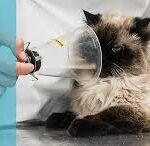When it comes to the topic of dogs having sex, many pet owners may feel uncomfortable or unsure about what is normal behaviour for their furry companions. In this comprehensive guide, we will delve into the various aspects of canine reproduction, including mating behaviour, breeding considerations, and responsible pet ownership.
Table of Contents
Mating Dogs Having Sex
Dogs having sex is a natural part of their reproductive cycle, but understanding their mating behaviour is essential for pet owners. Dogs typically reach sexual maturity between six months to two years of age, depending on their breed and size. During mating season, which varies based on factors like breed and geographic location, dogs may exhibit certain behaviours indicating their readiness to mate.
Signs of Mating Readiness

Female dogs in heat will display physical and behavioural changes, including:
- Swollen Vulva: The female’s genital area may appear swollen and pink.
- Increased Urination: She may urinate more frequently to mark her territory.
- Behavioural Changes: Restlessness, increased vocalization, and heightened attention from male dogs are common signs of heat.
Understanding Dogs Having Sex: A Comprehensive Guide
Male dogs, on the other hand, may become more restless and alert during mating season. They may also exhibit mounting behaviour and urine marking to assert their dominance and attract potential mates.
Responsible Breeding Practices
While dogs having sex is a natural behaviour, responsible breeding practices are essential to prevent overpopulation and ensure the health and welfare of both the parent dogs and their offspring. Pet owners should consider the following factors before breeding their dogs:
- Health Screening: Both male and female dogs should undergo health screenings to identify any hereditary or genetic conditions that could be passed on to their puppies.
- Genetic Compatibility: Breeding dogs should be genetically compatible to reduce the risk of inherited health problems in their offspring.
- Age and Health: Dogs should be of suitable age and in good health before breeding to minimize the risk of complications during pregnancy and birth.
- Breeding Environment: Provide a safe and comfortable environment for the mating process and subsequent pregnancy.
- Responsible Ownership: Ensure that the puppies will be properly cared for and find loving homes before breeding your dogs
- Health Considerations for Breeding Dogs
- When considering dogs having sex for breeding, it’s crucial to prioritize the health of both the parent dogs and their potential offspring. Responsible breeding practices involve more than just mating dogs; it requires careful consideration of genetic health, reproductive fitness, and prenatal care.
- H3: Genetic Health Screening
- Before breeding your dogs, it’s essential to conduct thorough genetic health screenings to identify any hereditary conditions that could be passed on to their puppies. This involves testing for common genetic disorders prevalent in their breed, such as hip dysplasia, progressive retinal atrophy, and heart disease. By ensuring that both the male and female dogs are free of these genetic conditions, you can minimize the risk of passing on inherited health problems to their offspring.
- Reproductive Fitness
- In addition to genetic health screenings, it’s important to assess the reproductive fitness of the breeding pair. Female dogs should undergo a pre-breeding health checkup to ensure they are in optimal physical condition for pregnancy and birth. This includes evaluating their overall health, reproductive anatomy, and hormone levels. Similarly, male dogs should be assessed for fertility and reproductive health to ensure they are capable of successfully impregnating the female.
- Prenatal Care
- Once the female dog has been successfully bred, proper prenatal care is essential to ensure a healthy pregnancy and birth. This includes providing a nutritious diet tailored to the specific needs of a pregnant dog, regular veterinary checkups to monitor the mother’s health and the development of the puppies, and preparing a comfortable and safe whelping area for the birth.
- H2: Responsible Ownership and Puppy Placement
- Beyond the act of dogs having sex and breeding puppies, responsible ownership extends to ensuring that the resulting puppies find loving and permanent homes. Before breeding your dogs, consider your ability to care for and find suitable homes for the puppies. Responsible breeders carefully screen potential adopters to ensure they are capable of providing a loving and stable environment for the puppies.
- Ethical Considerations
- Finally, it’s essential to consider the ethical implications of breeding dogs. With millions of dogs euthanized in shelters each year due to overpopulation, responsible breeding practices are crucial for reducing the number of unwanted animals. Before breeding your dogs, ask yourself if you are corndogs Having Sextributing positively to the welfare of the canine population and if your actions align with the principles of responsible pet ownership.
Spaying and Neutering
Dogs Having Sex

For pet owners who are not interested in breeding their dogs, spaying (for females) and neutering (for males) are effective methods of birth control and offer numerous health benefits. Spaying and neutering can help reduce the risk of certain cancers and behavioural problems, such as aggression and roaming.
Conclusion
In conclusion, understanding dogs having sex is essential for responsible pet ownership. By familiarizing yourself with the mating behaviour of dogs and considering the implications of breeding, you can ensure the health and welfare of your furry companions. Whether you choose to breed your dogs responsibly or opt for spaying and neutering, prioritizing the well-being of your pets should always be the top priority.





























































